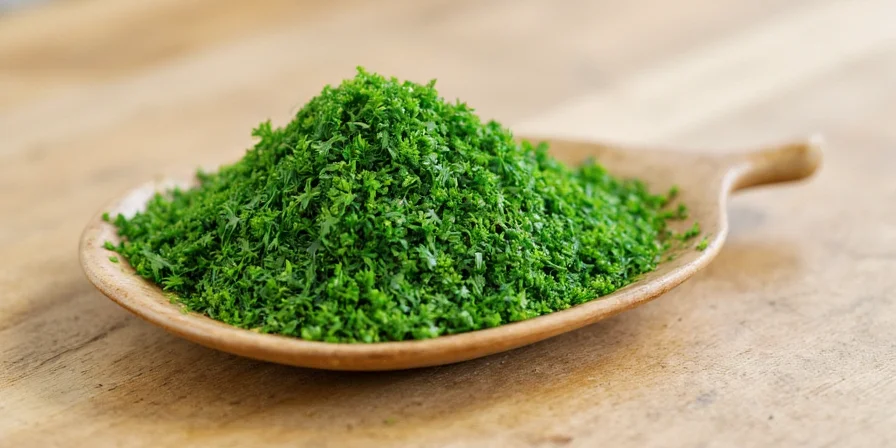The Ultimate Guide to Dill Substitutes
Dill is a popular herb known for its distinctive flavor, often used in dishes ranging from pickles to seafood. However, there are times when you might find yourself in need of a dill substitute. Whether you’re out of dill or prefer a different flavor profile, this guide will provide you with various alternatives and usage hacks to ensure your culinary creations remain delicious.
Understanding Dill
Dill (Anethum graveolens) is a member of the Apiaceae family, which also includes carrots, celery, and parsley. It has a unique flavor that is slightly sweet, tangy, and somewhat citrusy. Dill can be used fresh or dried, and it pairs well with various foods, including:
- Fish and seafood
- Pickles and brines
- Soups and stews
- Salads and dressings
Common Uses of Dill
| Dish | Common Uses |
|---|---|
| Pickles | Flavoring agent in brine |
| Fish Dishes | Seasoning for salmon and other fish |
| Salads | Fresh herb in dressings and toppings |
When to Use a Dill Substitute
There are several reasons you might need a dill substitute:
- You’re out of dill.
- You dislike the flavor of dill.
- You have an allergy or sensitivity to dill.
- You want to experiment with different flavors.
Top Dill Substitutes
Here’s a list of the best alternative herbs and spices to use in place of dill:
1. Fennel Fronds
Fennel has a slightly sweet and anise-like flavor, making it a great substitute for dill, especially in fish dishes.
- How to Use: Use fresh fennel fronds in equal amounts as you would fresh dill. For dried fennel, use half the amount.
2. Tarragon
Tarragon has a distinct flavor that is slightly sweet with hints of anise, making it an excellent substitute for dill in sauces and dressings.
- How to Use: Substitute tarragon in a 1:1 ratio for fresh dill. If using dried tarragon, use half the amount.
3. Basil
Basil offers a sweet and slightly peppery flavor that can brighten dishes in a way similar to dill.
- How to Use: Replace with fresh basil in equal amounts or use dried basil at half the amount.
4. Chervil
Chervil has a delicate flavor reminiscent of both parsley and anise, making it a suitable alternative for dill.
- How to Use: Use chervil in equal amounts for fresh dill, or use half the amount if it’s dried.
5. Parsley
While parsley lacks the unique flavor profile of dill, it can provide freshness to dishes that call for dill.
- How to Use: Substitute parsley in equal amounts for fresh dill, or use half the amount for dried parsley.
6. Mint
Mint offers a refreshing flavor that can complement many dishes, although it will change the flavor profile significantly.
- How to Use: Use fresh mint in equal amounts or dried mint at half the amount.
Using Dill Substitutes in Recipes
Here are a few examples of how you can incorporate dill substitutes into your favorite recipes:
1. Dill Pickles
If you’re making pickles and don’t have dill, try using fennel fronds or tarragon for a unique twist.
- Replace dill with 1 tablespoon of chopped fennel fronds or tarragon for every 1 tablespoon of dill required.
2. Creamy Dill Sauce
In a creamy sauce, you can swap dill for tarragon or chervil for a similar flavor profile.
- Use 1 tablespoon of tarragon or chervil in place of 1 tablespoon of dill.
3. Fish Seasoning
When seasoning fish, fennel fronds or basil can elevate the dish while replacing dill.
- Use 1 tablespoon of chopped fennel fronds or basil for every tablespoon of dill.
Storage Tips for Herbs and Spices
Proper storage of herbs and spices is essential for maintaining their flavor and potency. Here are some hacks for storing your dill substitutes:
- Keep it Cool: Store dried herbs in a cool, dark pantry away from sunlight and moisture.
- Air-Tight Containers: Use air-tight jars to minimize exposure to air and humidity.
- Labeling: Clearly label containers with the herb name and date of purchase to keep track of freshness.
Conclusion
In conclusion, while dill is a beloved herb in many dishes, there are numerous substitutes available that can provide similar flavors and enhance your meals. Whether you choose to use fennel fronds, tarragon, or another herb, these substitutes can help you maintain the integrity of your recipes while allowing for creativity in the kitchen. Don’t hesitate to experiment with different flavors and find what works best for you!
Illustration











 浙公网安备
33010002000092号
浙公网安备
33010002000092号 浙B2-20120091-4
浙B2-20120091-4